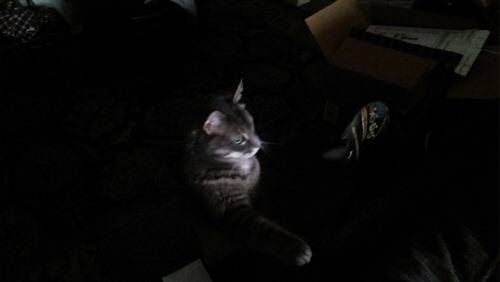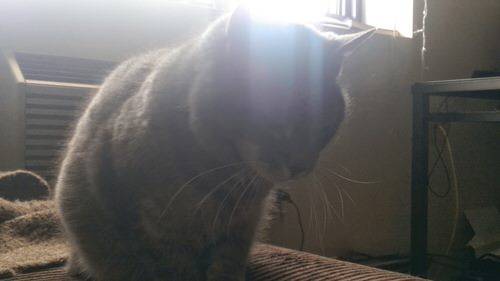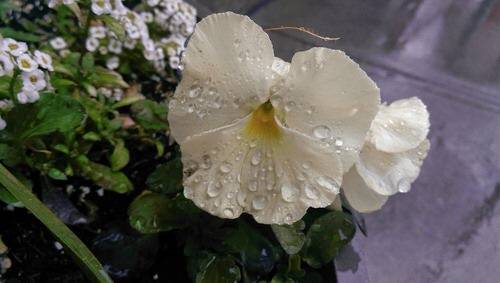I approach every smartphone review with a heavy degree of skepticism. I attend the launch event, listen to all the glowing things company executives have to say about their new flagship device and then wait for my review unit to show up in the mail. I then take a fair amount of time living with the device to determine just what the strengths and weaknesses are of the hardware and user experience.

I approached the new “dual camera” on the HTC One M8 smartphone with this “I’ll believe it when I see it” mindset.
HTC’s latest flagship smartphone has two cameras on the back: One is an “ultra pixel” camera that’s designed to capture more light with its sensors, while the other is essentially a meta-data camera, allowing the One M8 to capture more data faster for every photo it takes.
The dual-camera hardware approach is unique vis-à-vis the competition, doing with hardware what other smartphones do with HDR (high dynamic range imaging) software.
HTC describes the duo camera’s capabilities:
Duo Camera technology mimics the stereoscopic vision capabilities of the human eye–two independent lenses allow it to detect and calculate the relative distance of subjects in the image.
HTC can show us impressive specs, effusive white papers and demos all it wants. We can even applaud HTC for thinking outside of the box when it comes to smartphone cameras. But the basic question stands: How well does it actually work?
I played around with the HTC One M8 for a few weeks to get the full impression of the phone, as well as its camera. The results are encouraging but mixed.
Low Light Scenario: Towards The Head Of The Class
The concept of HTC’s “ultrapixel” camera was to capture more light for a clearer picture while also using up less megapixels in each shot. The hardware specifications of the HTC One M8’s camera might make sense to a professional photographer, but probably not to the layman that just wants to snap a selfie or something interesting on the street.
The proof is in the pudding, however: The HTC One M8 camera accomplishes its primary goal of taking excellent pictures in low light as well as—or better than—just about any other smartphone camera on the market.

This image of a mannequin at the genetics exhibit Smithsonian Natural History Museum in Washington, D.C. shows off the HTC One M8 at its best.
The room was dark but had a high degree of ambient blue light, which is often murder on most smartphone cameras. The HTC One M8 camera not only captured the mannequin in high detail, but also captured the aura of the figure, which was visible to the naked eye. I didn’t think the picture would come out so well when I snapped it, but looking at it later I was astounded at the One M8’s performance in such conditions.
This performance was not universal, unfortunately. For instance, the Hope Diamond (as it has done for so many people in its history) presented challenges. The diamond is in a well-lit case in a dark room. The light bouncing off the diamond makes it extremely difficult to focus a camera and to get any clarity; you have to zoom in. The HTC One M8 has a decent digital zoom (about middle of the market for smartphone cameras) and this image was about the best it could do with such a difficult subject.

How about extreme low light? This cat watching television tells the story.

Most people won’t be taking many pictures of glowing mannequins and the Hope Diamond, but rather quick snaps of their cat doing cute and strange things. For the real-life test, the One M8 camera grades well in low light but still reveals the inherent limits of most smartphone or digital cameras.
During The Day: Good Enough For Most
The camera in the HTC One M8 does well in the light of day but lags behind other top smartphones like the Samsung Galaxy S5 with more pure megapixel power.
See also: Review: HTC One M8 Is The Cream Of The Android Crop
The ultra-pixel camera in the HTC One M8 is technically only four megapixels, and despite all the additional sensors and advanced lenses, the lack of under-the-hood power sometimes limits how good the camera could be.
Let’s turn to Bao Bao the giant panda at the Smithsonian National Zoo in D.C. for the proof.

Bao Bao does well enough from a distance in good morning light. But when we zoom in to capture Bao Bao with a little more detail, the One M8 loses some of its definition.

Bao Bao only tells a portion of the story. The photo below—my cat hit by sunlight on the couch—is a good example of how the One M8 handles sunlight, white balance and shadows. The results are a bit hit-or-miss, depending on the position of the camera and amount of sunlight. But washed-out photos, like the one below, can be common with the One M8.

Daylight and indoor conditions are not a complete wash for the One M8; take the picture of the flower below. Shot on a cloudy, wet day, the clarity of a close-up show is excellent. The image shows off the dual-camera technology well, as it allows for the ability to focus on one central object within a photo and capture it with clarity. If I wanted to edit the photo later, the dual camera also captures the rest of the photograph in focus and would allow me to change the clarity of the picture to a different aspect—similar to the Lytro camera.

In the same cloudy-day light, we can get a good idea of how well the One M8 camera zooms in on objects. On the left is a maximum digital zoom of a statue, while the right image has no zoom. You can see the HTC One M8 takes good photos without the zoom and performs well in real-life situations.

Big Question: How Are The Selfies?
The front camera on the HTC One M8 actually has more megapixels than the back camera, though it lacks the hardware-defined dual-camera resolution. Essentially, it is the equivalent of the camera on an older iPhone with the ability to perform software-defined HDR (which actually makes it a pretty decent front-facing camera compared to most smartphones released last year).

The One M8 features a variety of modes for different types of pictures, including a timer-based selfie mode which helped to capture the T-Rex trying to eat me at the Natural History Museum. The One M8 also has a dual capture mode where you can take pictures with the front and back cameras simultaneously (a feature other manufacturers have employed recently as well). A “Pan 360” mode is available for taking wide shots while the Zoe camera on the HTC One M8 is an iteration from last year’s One flagship, which has the ability to take and pictures with movement, stills and video.

A Serviceable Camera For Every Day
The HTC One M8 camera has some good features and decent performance. It may not be the best of the best (a title which still probably goes to the Nokia Lumia 1020) but it is a decent option for everyday usage.
The HTC One M8 outperforms the Samsung Galaxy S5 camera in low light situations by a country mile, but is not as effective in sunlight conditions. One aspect where the One M8 shines is its speed. The dual camera hardware allows for shutter times that are much better than just about any other smartphone camera, a fact that is distinctly noticeable when you are quickly trying to capture a fleeting moment.
Does the dual camera live up to HTC’s hype? A definitive “yes” or “no” is difficult to come by, as it depends on the scenario the camera finds itself. Serviceable is a good word because, for the most part, you will find that the One M8 takes decent photos, if not exactly the best or worse you have ever seen.









